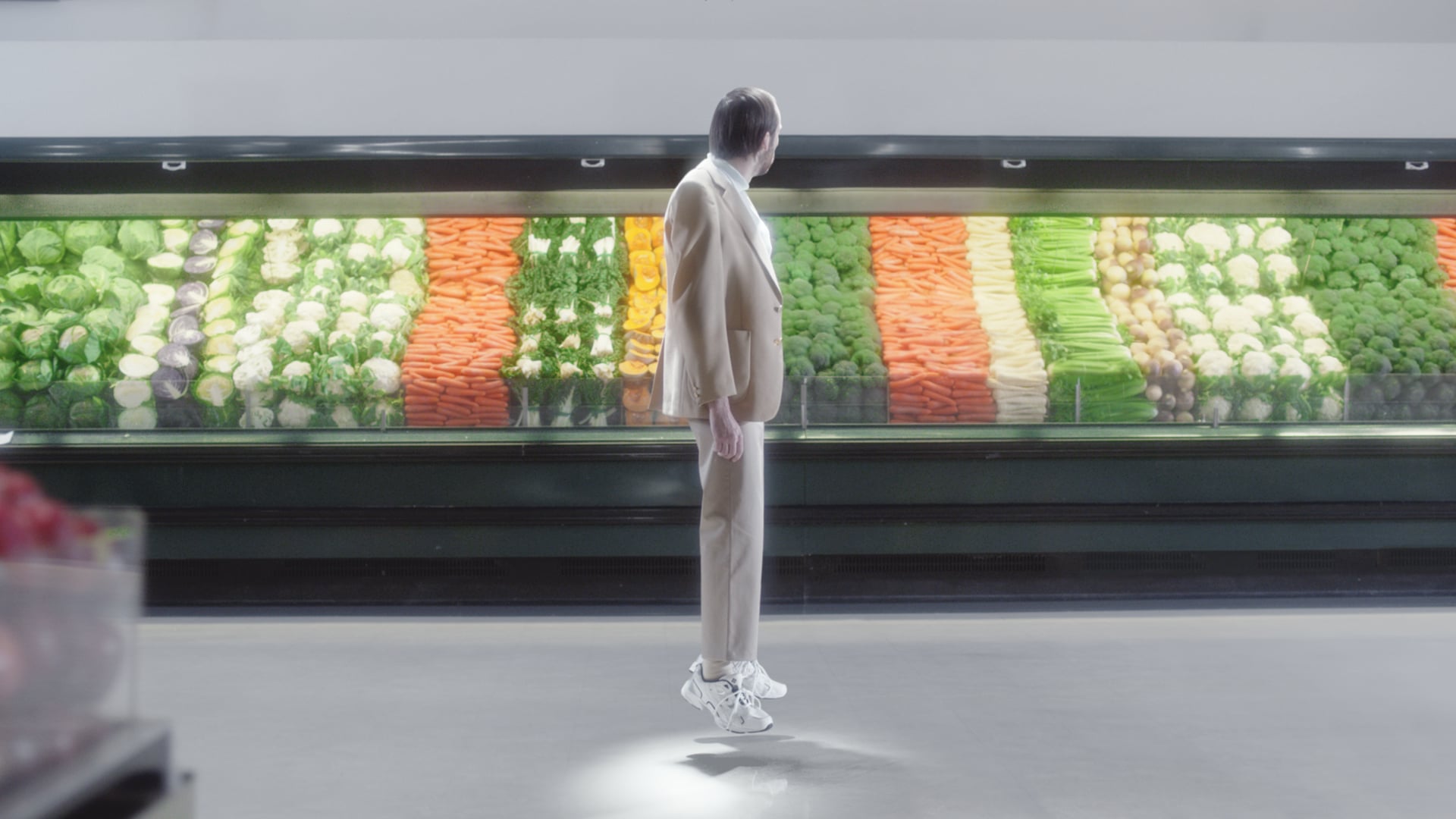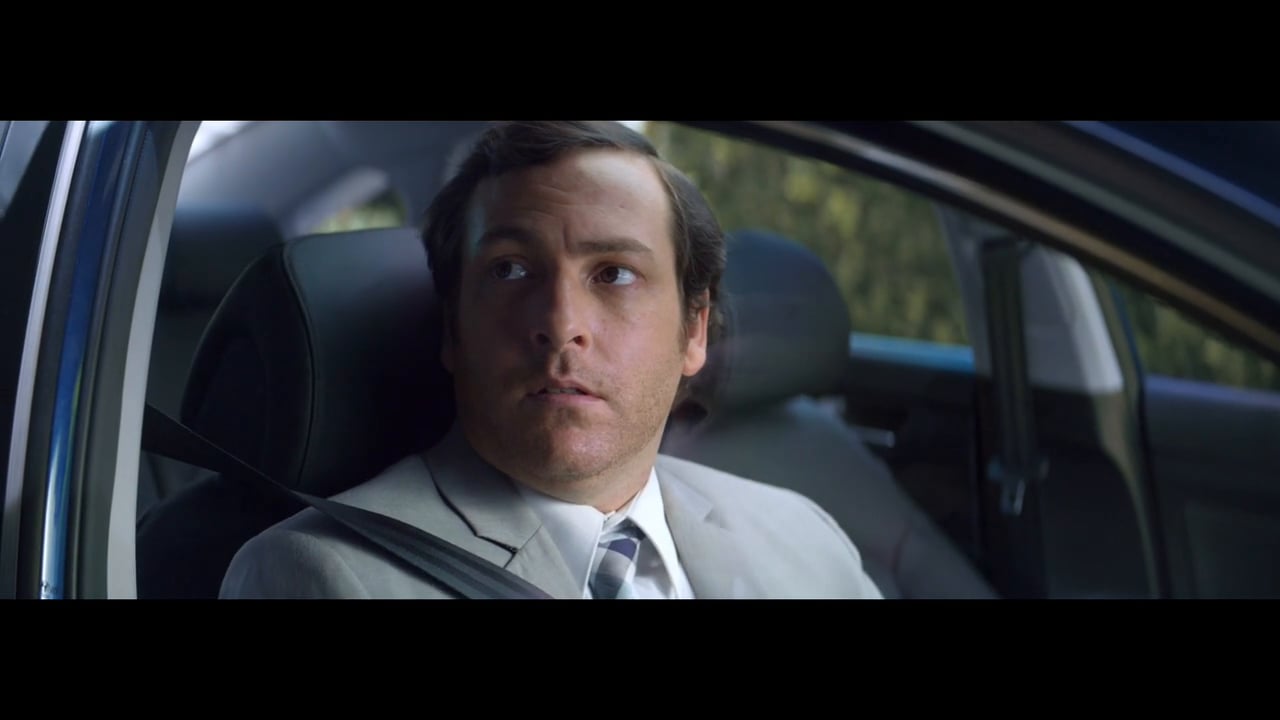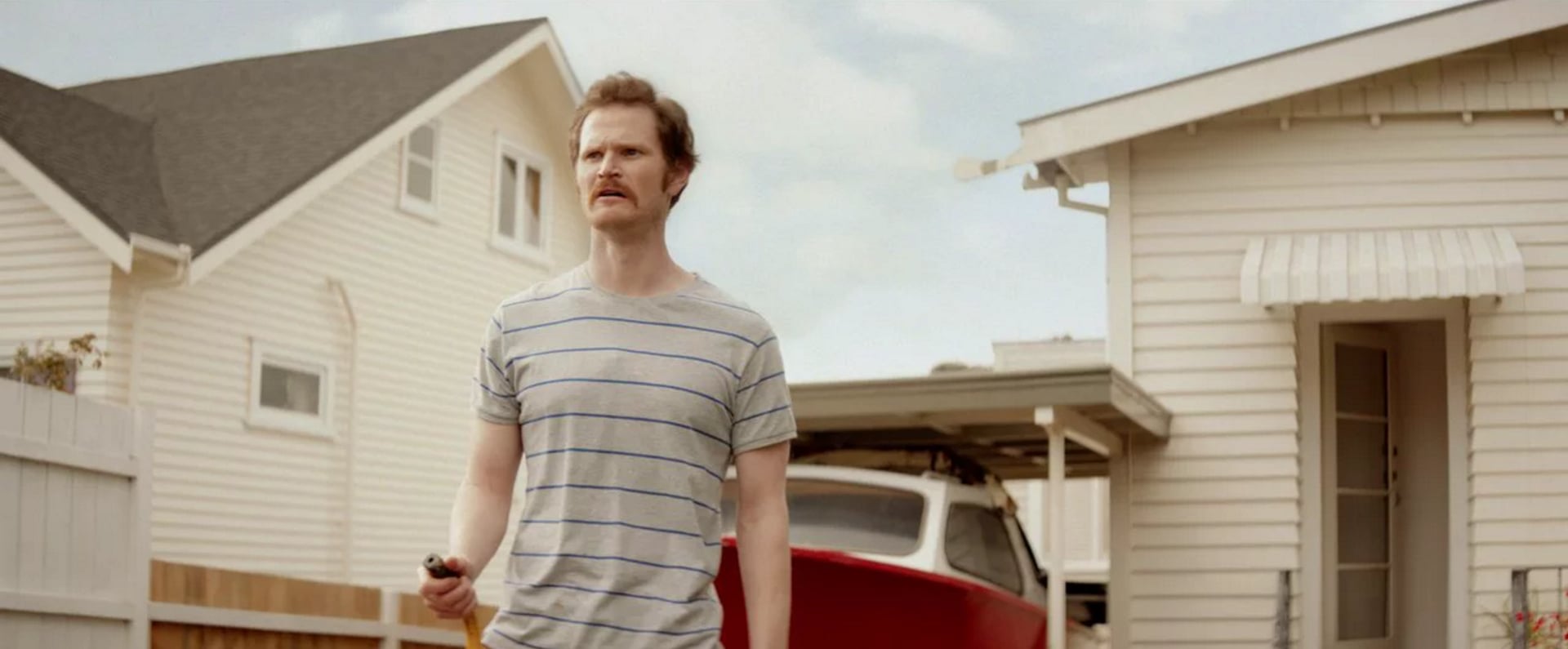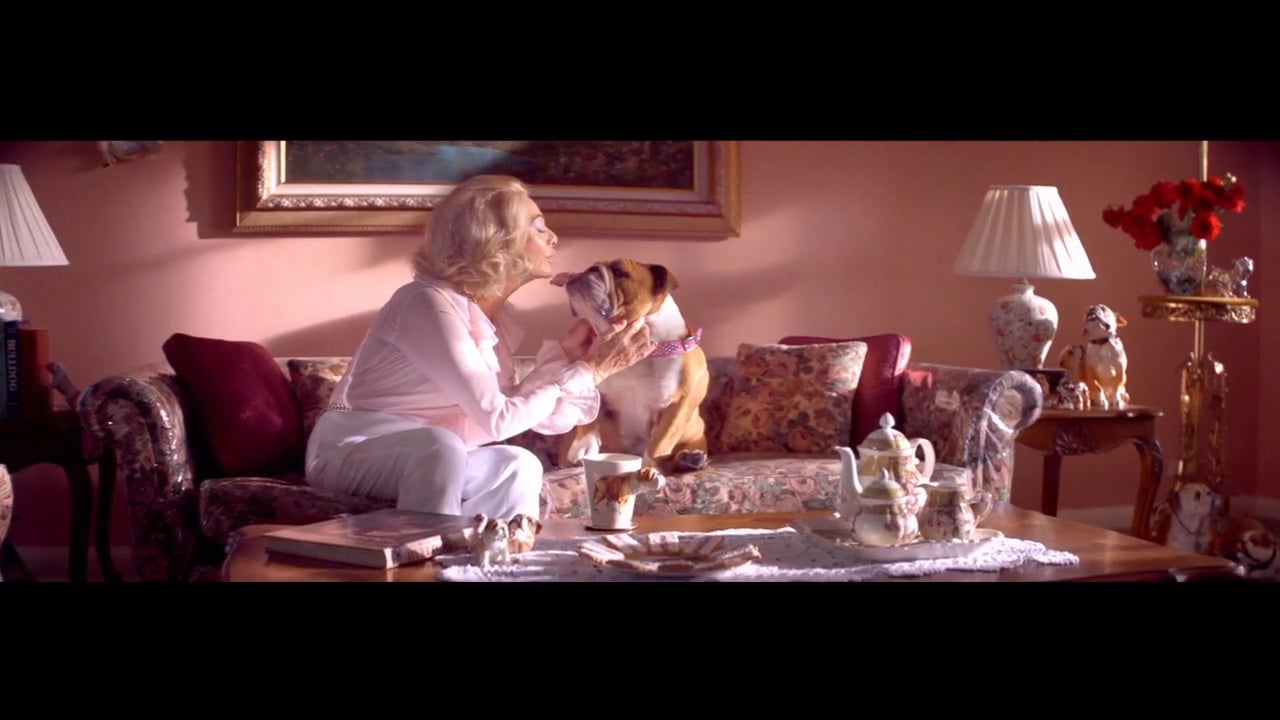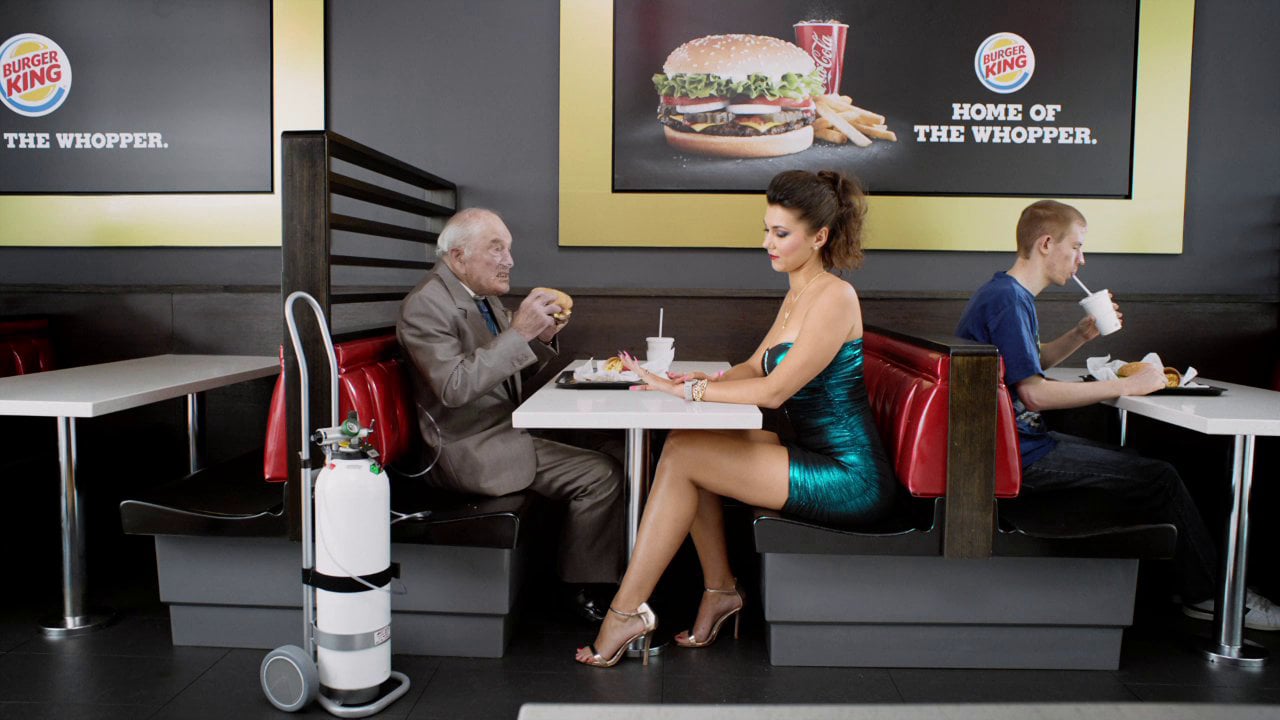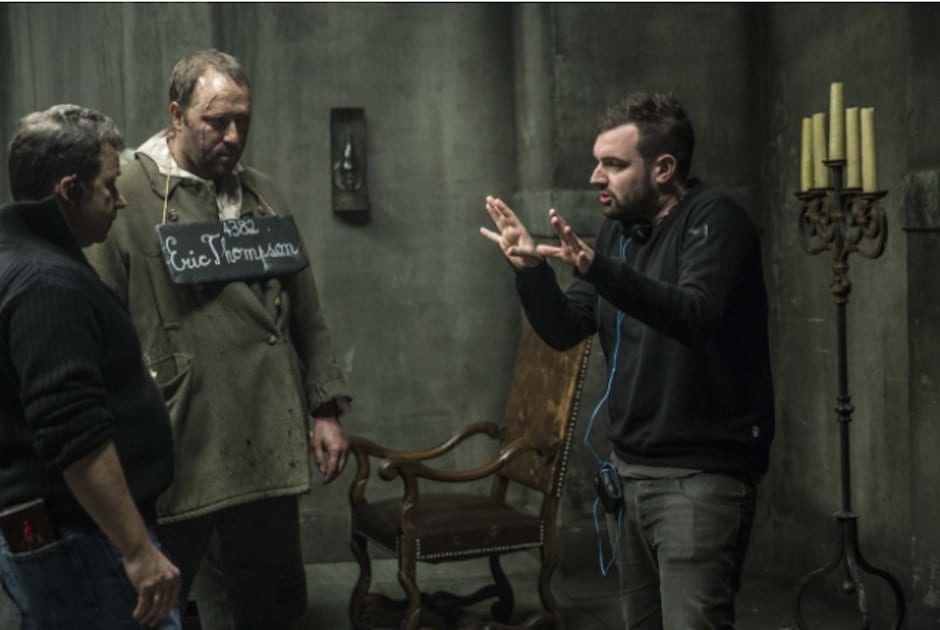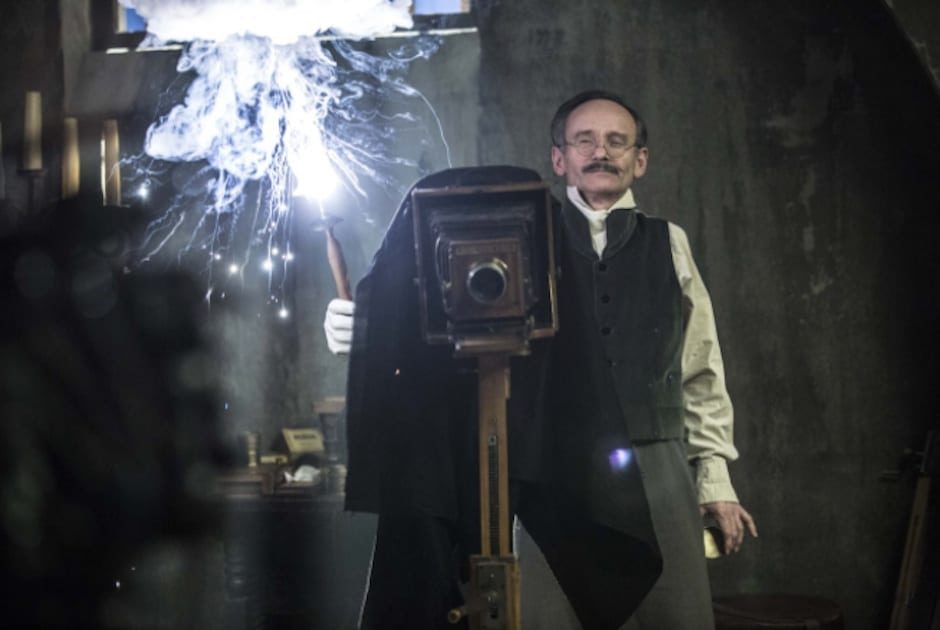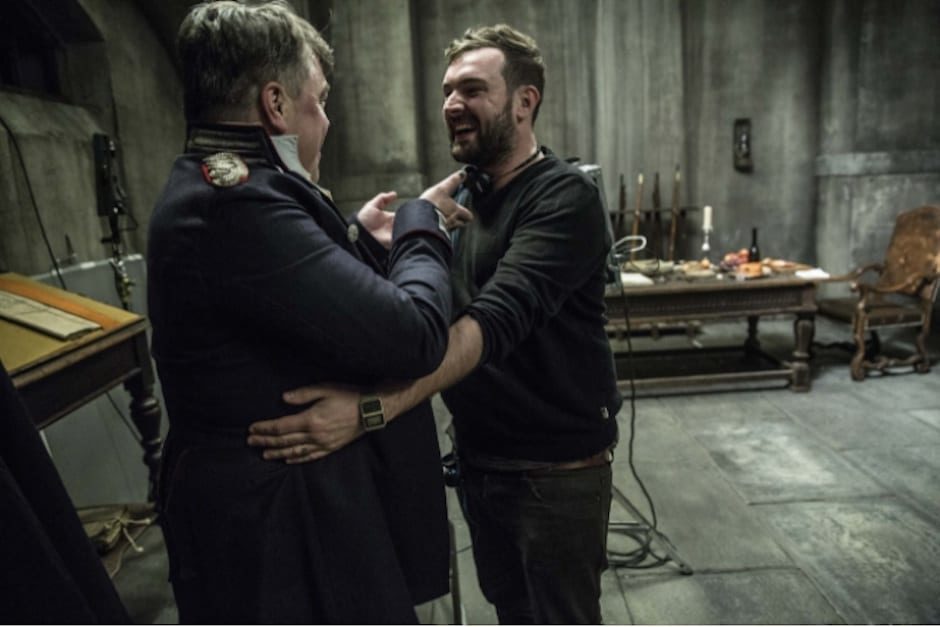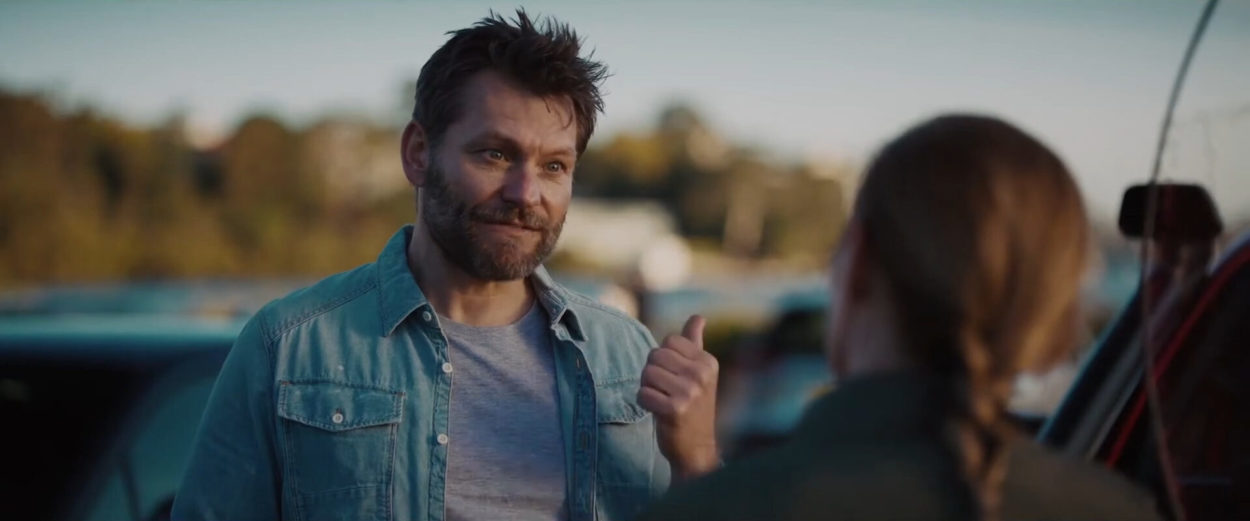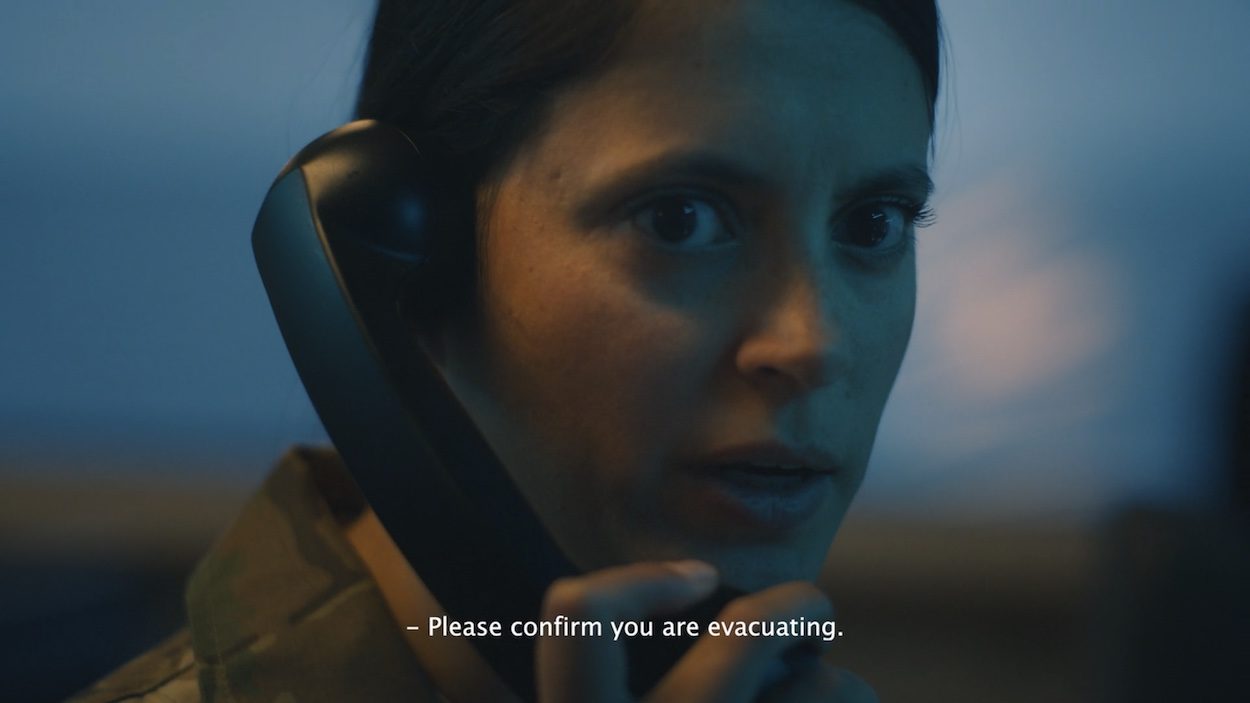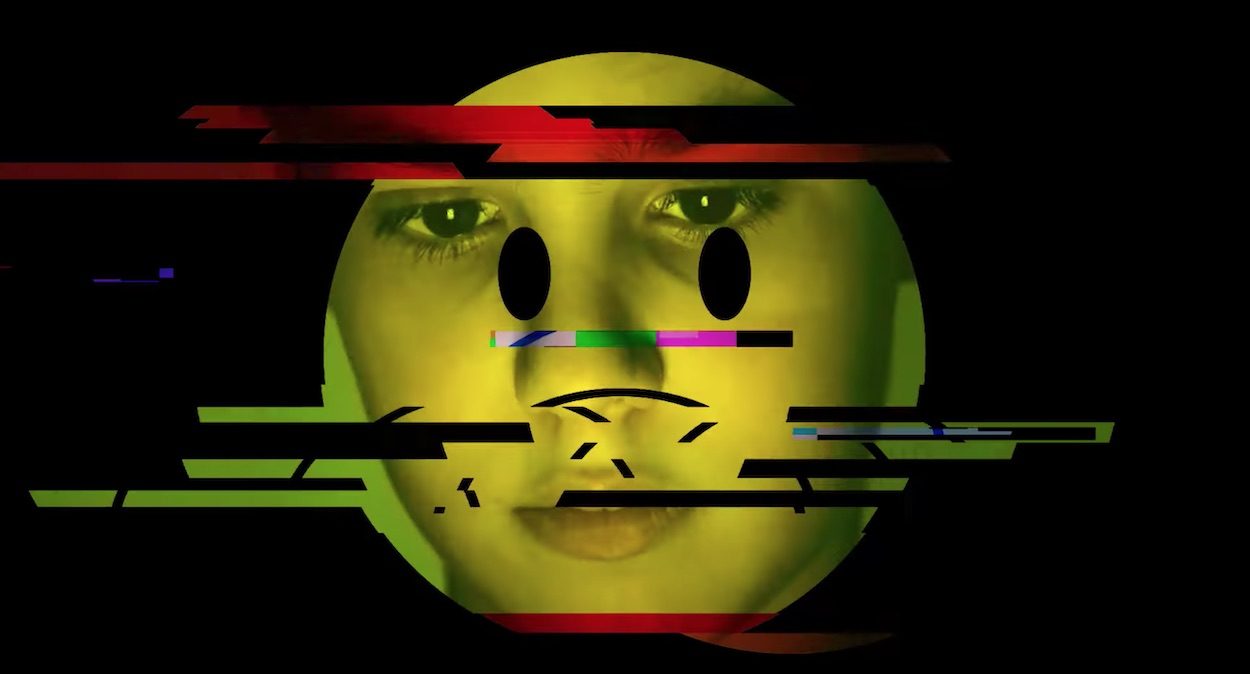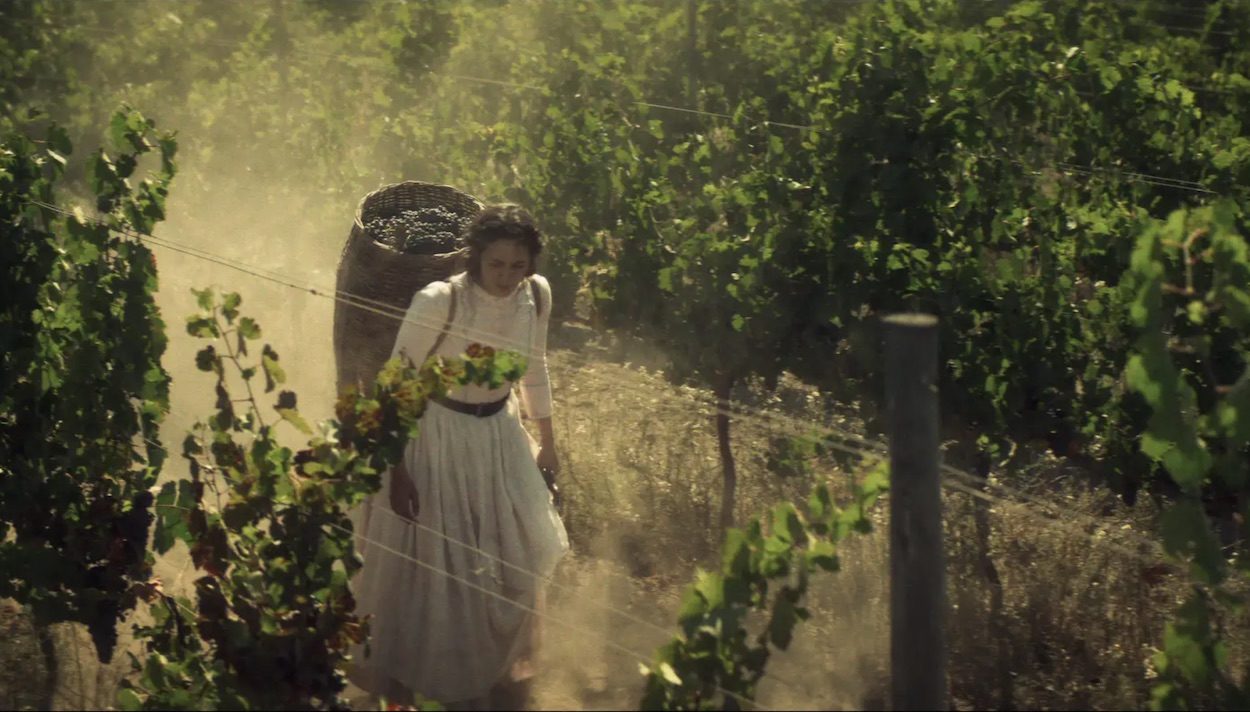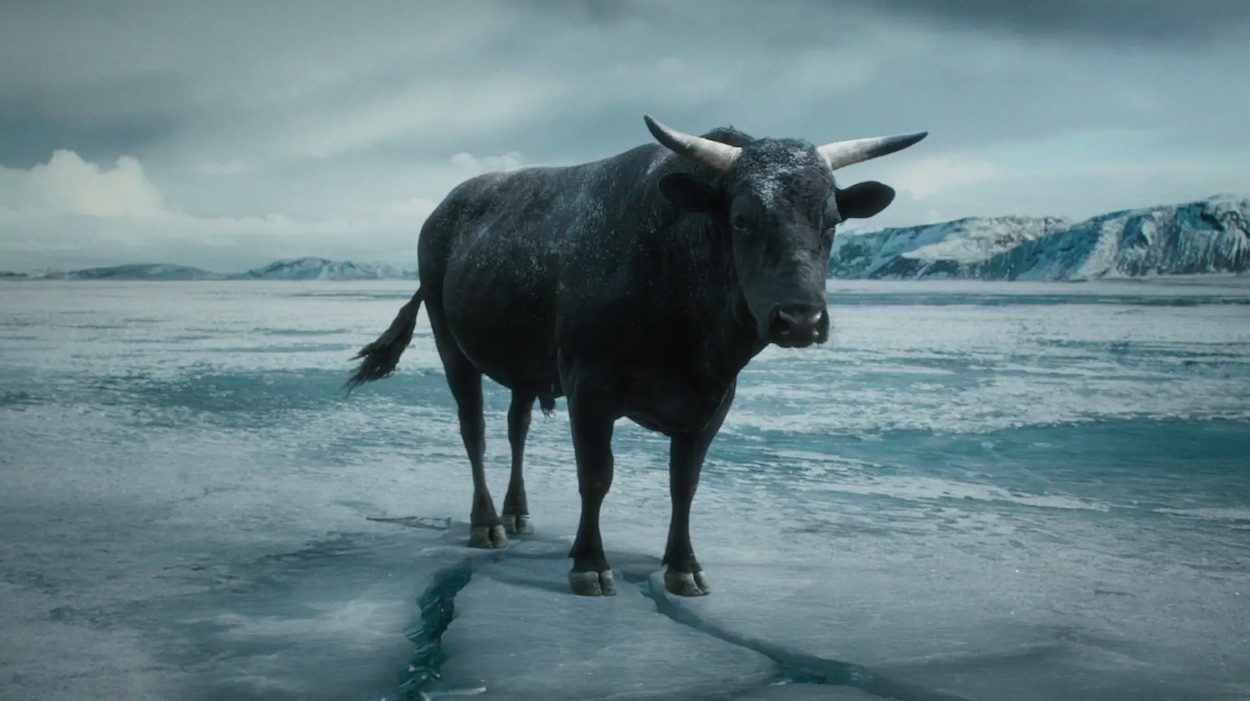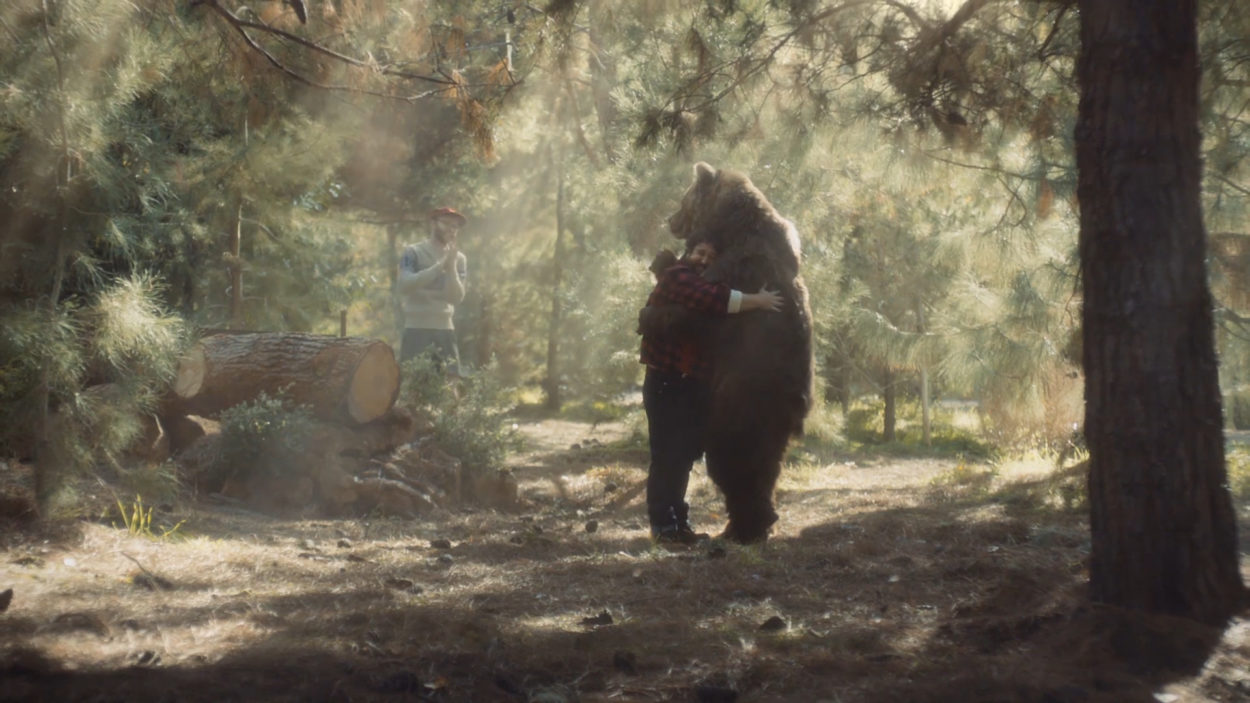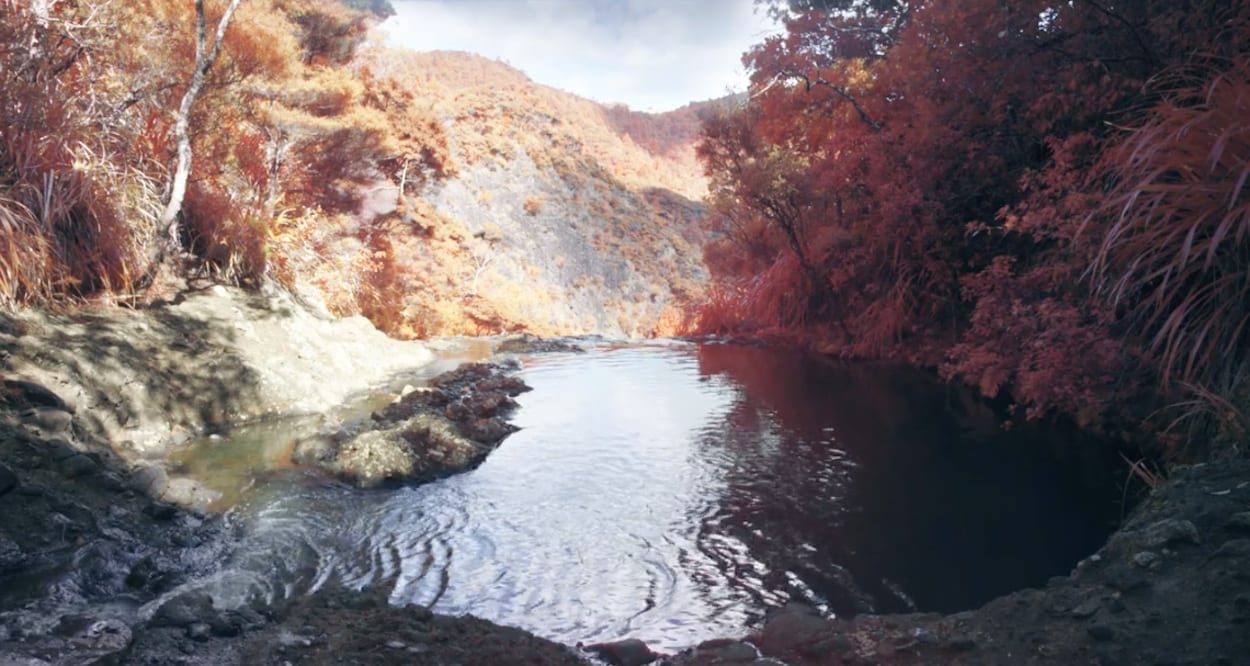Viewing your showreel would put a smile on anyone’s face (see in Related Content) – from the loopy Dreaming of Yams for a NZ supermarket chain to one of our favourites, Fire at the Old Well for DB Export all shot out of Finch, Sydney. And now following your recent signing with Furlined in the States, you have created this very filmic, although still amusing, film for the wine label 19 Crimes. What was behind this new style of direction and how did the experience differ from your usual comfort zone of working out of Sydney?
I wish I had a comfort zone in Sydney – my wife probably disagrees – or maybe it’s her comfort zone as I’m never there!! Sydney is a tough but really great place to learn your craft, and I still love pushing myself at home and abroad. Obviously, like any director your reel is built from your home marketplace, but that’s never what drives me and never guides my decisions in what scripts to go for. There’s plenty of scripts floating about, I just always take it one script at a time and try and see what I can do with it and where I can take it to.
I think the new direction stems from the opportunity that presented itself. I’ve always had a desire to tell stories of any kind, comedic or not, and this spot felt like one of those golden opportunities to do something different, while also staying true to the things I love to do – building compelling and interesting worlds in which to tell those stories. It was one of those moments when you just get this really enthralling narrative which you were just dying to try and bring to life. I just love storytelling and mixing it all up with in a big bowl of film craft. I’m really lucky to be able to do it for a living.
How did the commercial evolve – what was the original brief and how did you evolve the script with your treatment?
The script was pretty simple actually, far simpler than what I ended up making! It was originally just set around the very simple photographed portraits, and there was no “gang” of sorts. They were individuals who got brought into the room one by one, had their photo taken and then on the boat revealed that they had these items at their disposal – boom, tish, done.
I took myself and my assistant Jake (Rogers Lowery) off to the pretty underwhelming Convict Museum in Sydney and we spent half a day walking around and reading about the Convict experience. Between the badly made props and costumes you could dress up in, there was actually enough information in which a more sophisticated version of the story became clear in my mind.
I essentially wanted to apply a far more traditional narrative structure, and added the classic antagonist character of the head guard – a real prick who would provide the necessary motivation for these guys, and give this group of rebels someone to DO THIS TOO – and turn the individual convicts into a group (I learnt at the museum they’re almost always transported as groups) – a rag-tag band of mischievous brothers in arms so to speak….and the one who gets the knickers at the end is the big dick playa. The mother fucking Cool Hand Luke style leader. From there, it was all about the girl, their relationship and the McGuffin of sorts she provided for the story.
I guess, essentially, telling the stories of what is an important part to a country’s history was never going to be as simple as we imagined, so it just kinda grew as we delved in further and learnt more about that very cool period of time.
Was everything nailed down in pre-production and the shoot straight forward or were there some taxing challenges?
I think by the time we were ready to shoot it was very much locked down. It sort of had to be, there was no where near enough time to shoot what we wanted to shoot, with a lot of setups and nuanced performances from the cast. But I’m the kind of fly by the seat of your pants type of guy – and knew that once I had the right cast, we had all the ingredients to make something great.
Then we toddled off to shoot in Prague with the most amazing crew, and the hardest part of that was trying not to drink so many beers whilst I was there. I reckon I failed on that part – but it was definitely essential in my method directing style quest to ‘understand my characters’…
Your spot prompted us to further investigate your hero, the Irish poet John Boyle O’Reilly who was sentenced and “transported” on the last convict ship to Australia in 1867. There’s love, tragedy, political passion, high adventure, and of course his wonderful poetry – all the ingredients for a movie. Are you going to write and direct it?
It’s an awesome story isn’t it? That’s what first jumped out to me in the script – the amazing potential for a bigger narrative which could be told. It’s also clearly so much bigger than what this little film certainly suggests. We talked about it when we were shooting, and definitely feel like there is something in there to investigate for sure. I think that part of history, and the world is something that’s properly amazing – not only for Poms and Aussies, but for everyone.
That was one of the great parts of the job. The research I did (it obviously all wasn’t just playing dress ups and drinking) taught me a massive part of my country’s history that you only hear about briefly at school. These stories almost always feel like they get played out in poorly made 1 hour educational documentaries, but as you say – all the ingredients are there and it’s certainly something I’d be very interested in taking further. Perhaps even something funny? I reckon that really rugged mix of bleak history could do with some dark humour… Now I just need the convict-ion to carry it out. Terrible joke – I apologise.
A lot of your films are dependent on visual gags and some nifty scriptwriting. To what extent do you become involved in the writing as well as the direction?
I guess as much as I can. I see my job as telling the best possible version of the idea presented to me on the page. I think as a director that’s your job – not to simply execute what is on the page, but consistently add value and make the thing as cool as it can be. I’m always looking to collaborate and feel the best work I’ve done has been born out of a collaboration between the creatives and myself to push, push, push until we can’t push anymore. I think it’s about staying open to the evolution of an idea, and every step looking to what you’re making and wondering – is this the best it can be? For the most part there’s a very simple “no” to that question, so you go again until you’re surprising yourself.
What part of the filmmaking process do you enjoy the most?
Oooohhhhhhh – good question. I reckon it’s most probably the catering. The other answer I guess would be casting. For me it’s where all the notions of what you think you’re making go out the window, and if an actor walks in and nails it, but not in the way you expect – I legitimately lose my shit. In a good way. Like I might actually poop in the corner of the room with excitement. I think that’s for me where it all starts to come alive. It’s hard to explain, but once you see it – you know it, you completely feel it and you can’t wait to shoot it. It feels to me when you nail the casting, people will watch your stuff time and time again and it becomes vital to how the idea is best brought to the screen.
There aren’t many, if any, 29 year olds with a reel like yours, what is it about the filmmaking for advertising which inspires you?
The variety. The fact that every day is different and you don’t know what’s around the corner. And probably that my attention span lends itself to 30 seconds. I think that’s what’s completely thrilling. Consider that one day I woke up and there was a script like 19 Crimes in my inbox that’s completely different to anything that’s on my reel. That someone can see through the narrow little pigeon hole that advertising loves to put you in, and can see your potential to tell stories outside what you’ve done before is the best thing ever. Then the fact that you get to make that? I mean – come on, it’s not a real person job but I don’t know what else I’d be doing.
Out of all the films you’ve made what was the most nightmarish production scenario you had to contend with?
“Fire At The Old Well”, and one particular shoot day that went for 19 hours because the animal trainers got confused which dog was the “barking dog” and which was the “running dog”. Cut to agency, client, crew and 160 extras sitting in a theatre at 4am waiting for the fucking dog to bark ONCE – and only after 4 hours of trying – did the animal trainers quietly and somewhat awkwardly suggest that they “might just take Lassie outside for a bit of fresh air”…smash cut to them bounding back into the theatre with a very sprightly, eager and clearly completely different dog – who on the first take, hit her mark, barked, we cut – and we could call go home. I feel shell shocked just thinking about it – like I’m back in ‘Nam or something.
Finally, I have to ask this, but why on earth a talking yam?!
There’s a funny story about that – the shot of him floating through the fridge, and the talking yam were never storyboarded. They were always in my head, but the client was taking a pretty big leap with the guy floating through the supermarket already…so it never felt like it would get approved should I show it on the boards (one step too far and all that). So one day after shoot when she had long gone, I quickly nabbed those shots. It always felt conceptually for the fantastical dream sequence to happen, we needed more of a justification and clear entry & exit points for our hero.
The first time the client saw them was when I presented her a 60” cut of her ad, and not the agreed 30”…and with Gary Wright’s epic and epically expensive “Dreamweaver” as the soundtrack. I explained my reasoning before I pressed play, saying what she was about to see was well outside her comfort zone, but conceptually it was sound and it works it’s arse off.
She watched the edit once, (I couldn’t even turn around to look at her reaction I was so scared and you could’ve cut the tension with a knife)…but suddenly she stood up, exclaimed “right, well that’s our ad then. Bin the 30, get me all 60s and get me a number on that track – that’s the best fucking ad I’ve ever seen”. She may have well thrown a smoke bomb to the ground it was that emphatic. Full on Jerry McGuire high fives and fist pumping ensues, and sure enough she spends the crazy money on that track, and puts the 60” to air with no 30s in sight. It feels like one of those seminal experiences that won’t happen often, but I think the result spoke volumes about always pushing to tell the best possible version of the story – even if that yam looks eerily like a talking butt plug.
See more of Nick Ball’s work and production stills from 19 Crimes in Related Content.
All production photography by Petr Dobias

